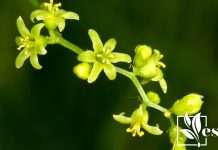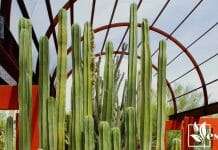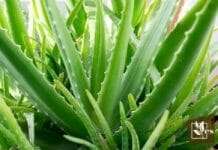- When to Plant Eggplant in NC: Essential Timing Tips for Gardeners - October 2, 2024
- When to Plant Pumpkins in Eastern NC: Optimal Timing for a Bountiful Harvest - October 2, 2024
- When to Plant in South Carolina: Essential Timing for Garden Success - October 2, 2024
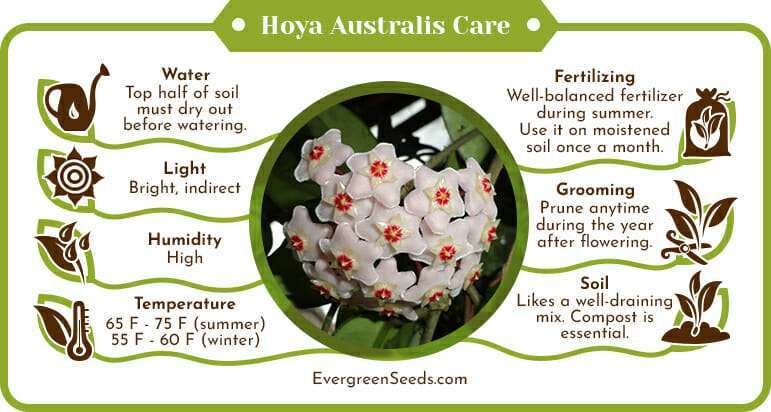 Hoya australis care is easy, and anyone can grow them because they are excellent houseplants for novices and practiced gardeners alike. This plant from the Apocynaceae family is also known as a wax vine or common waxflower and is the most famous hoya variety after Hoya carnosa.
Hoya australis care is easy, and anyone can grow them because they are excellent houseplants for novices and practiced gardeners alike. This plant from the Apocynaceae family is also known as a wax vine or common waxflower and is the most famous hoya variety after Hoya carnosa.
Hoya australis plants have a tolerance for oversight, and the low-maintenance Hoya australis is best for any indoor location as it does not need lots of water or resources. Read this complete guide for everything you need to know! You can also check out our guide on how to care Hoya Cumingiana succulent.
JUMP TO TOPIC
The Basic Plant Care For Hoya Australis
Hoya australis is one of the favorite garden plants in Australia. The gardeners love the flowers and place them in the most suitable well-lit space to enjoy their beauty. It is usually hanged but can be grown in containers and trained upwards.
Although it attracts butterflies when planted in the garden, Hoya australis can be planted indoors. Furthermore, it is a fast-growing creeper. Hoya australis is an easy-to-care, low-maintenance plant. The best thing is that it also helps in air-purifying qualities.
Choose a well-draining potting mix and an area that receives sunlight during the active growing season, but in its natural setting, it often grows in rocky sections of a rainforest.
The fragrant, white flowers have become a reason for their recent popularity as a houseplant and the waxy flowers grow in late winter and survive throughout the summer.
The following section will explain everything that you need to know about growing and taking care of your Hoya australis vines, be it the soil, water, light, or humidity required. You will also learn how and when to feed and propagate the plant.
 Soil
Soil
Hoya australis likes a well-draining mixture. Try for a soil mix that is fast draining and well-aerated. Compost is essential for the plant to thrive. A good quality organic compost will do wonders for delicate vines.
Create your mixture using one part of each compost, orchid bark, and coarse perlite. If you are growing Hoya australis in the potting mix for succulents, it is best to amend the soil with bark, perlite, or charcoal.
The biggest benefit of a well-draining mixture is that it will reduce the damage of overwatering and preserve the plant from root rot. The ideal pH of the potting mixture is between the range of 6.1 to 7.5. In other words, the potting mix should be slightly acidic to neutral.
Hoya australis grown in greenhouses prefers a loam-based soil mixture with a combo of bark, leaf mold, and sand mixed in equal parts. It is essential to screen the plant from direct sunlight in such cases.
 Watering
Watering
Hoya australis needs low to medium watering frequency as an indoor plant. The succulent leaves store water and don’t need regular watering. Water the plants once in 10 days, and they will be happy.
It is always a good idea to inspect your soil before watering. Inspect the soil by utilizing a moisture meter or by inserting your finger into the soil. It is essential to allow the top half of the soil mix to dry out before watering.
During summer, the soil of Hoya australis should be moistened but not waterlogged. Saturate the soil until water drains from the bottom of the container. Treat your Hoya australis with rainwater or distilled water when it is possible.
In winter, Hoya australis will not need frequent watering. It is better to underwater Hoya australis plants than overwatering. Overwatered plants will have root rot, and the leaves will begin to wither. So, Hoya australis will tolerate underwatering because of its succulent nature.
Immediately water your plants if the leaves are curling. Don’t panic. The leaves will soak up the water and will revive soon. In the same manner, it can tolerate drought but will be sensitive in the cold season.
 Light
Light
Hoya australis needs lights to bloom and thrive. They originate from tropical environments and like to grow by climbing up trees. If we try to mimic those same growing conditions, the Hoya australis will grow beautifully.
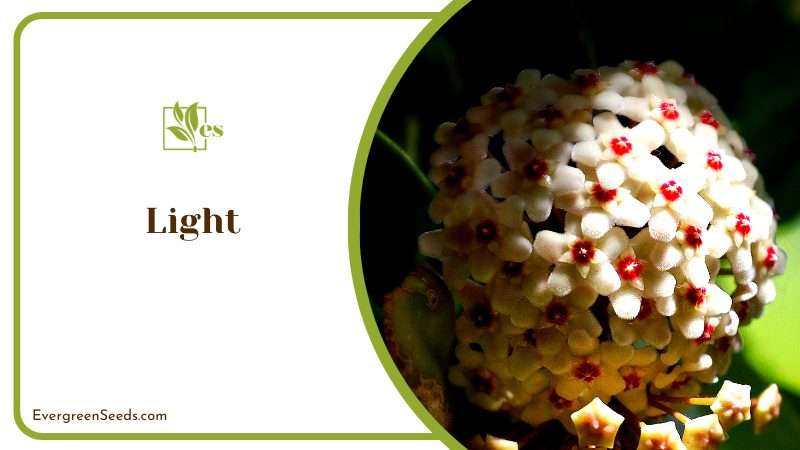
In some areas, it can also grow in full sun. But it is best to shelter it from the direct sun. This step saves it from sunburns. It is best to shelter the plants from strong winds too. Avoid hanging in a window that gets a strong blow of winds. Sea-facing windows will also bring a lot of salt with them and affect the plant.
Hoya australis needs bright indirect light. It will enjoy the sun all year long. Early morning and late afternoon light is the best for the elegant vine. Low light will discourage blooming. Select a place where it gets the right light for the optimal growth rate of Hoya australis.
 Temperature
Temperature
Hoya australis prefers indoor temperatures ranging from 65-75 degrees Fahrenheit in summer and spring. Avoid extreme fluctuations in temperatures because it will disrupt the plant and stop the growth.
Hoya australis prefers to be warm and cozy. The minimum room temperature that is ideal for it is above 60.8 degrees Fahrenheit. During winters, 55-60 degrees Fahrenheit is perfect.
It is best to bring in the Hoya australis plants indoors in winter if you get harsh cooler months. If the temperature drops below 50 degrees Fahrenheit, then it will damage the plants. There are other varieties of Hoya that grow on an elevation and respond well to cold in their natural habitat.
 Humidity
Humidity
Hoya australis grows from tropical environments, but it is now grown in diverse climates as a houseplant. Hence, it is essential to mimic the original growing conditions for vigorous plant growth.
Hoya australis loves high humidity levels but will withstand low humidity levels too. Humidity can be increased in many ways. Here are some ideas:
- Install a humidifier
- Moist your plants with a sprayer
- Install a gravel or pebble tray under the pot
- Group plants together
For best results, increase humidity for your Hoya australis plants to boost their growth.
 Fertilizer
Fertilizer
Hoya australis likes a light feed of fertilizer. You can apply any well-balanced fertilizer during summer. Here is a simple way to do this.
- Dilute a quarter teaspoon of fertilizer in a gallon of water.
- Use it on moistened soil once a month.
- Spray it on the leaves too.
- Bloom booster fertilizer like 7-9-5 of NPK or a general fertilizer labeled 15-15-15 will be suitable.
Remember, the plant stops growing in winter. It should not be heavily fed during that time. Some gardeners prefer treating it with high potassium fertilizer monthly during winters. A feed of plant food in the growing season is most suitable.
Hoya australis also loves organic and all-natural fertilizers.
 Pruning
Pruning
The climbing vines of Hoya australis can grow as big as five meters in height. Container-grown plants will need appropriate pruning to keep them in shape. You can prune the plant anytime during the year after flowering.
Spring is the best time to perform this task. Flowers grow on the new shoots but avoid over-pruning. Pruning can help rejuvenate the vine. Watch out for the dried seed pods while pruning. You can also save seeds as you trim your plants.
Propagation
Propagating Hoya australis is simple. The easiest method to extend your plant collection is by taking stem cuttings. You can choose any one of the two main strategies for Hoya australis propagation. Following is the guide to multiply your plants using water and soil propagation.
Stem Cuttings Planted in Soil:
- Choose a healthy stem that is not flowering.
- Cut the stem using sterilized pruning shears. Cut below the nodes, keeping at least two nodes on the cutting.
- Have a propagation mix of three parts perlite and one part peat moss ready in a pot.
- The optimal temperature for successful propagation is above 70 degrees Fahrenheit.
- Make space in the soil and place the cuttings inside the soil, making sure the top of the cutting is a few inches above the ground. Rooting hormone can be used.
- It will take about a month to establish roots and grow shoots.
Stem Cuttings Planted in Water:
- Fill a container with filtered water and combine a few drops of the rooting hormone.
- Take cuttings using the method mentioned above.
- Place cuttings in the water, keeping the top a few inches above the water’s surface.
- Roots will appear in a couple of weeks. Once you notice that the roots are a few inches long, repot it to the soil mix.
Repotting
Just like other Hoyas, Hoya australis also prefers to be a little root-bound. Do not repot if it is not necessary. Hoya australis roots will not appreciate being disturbed.
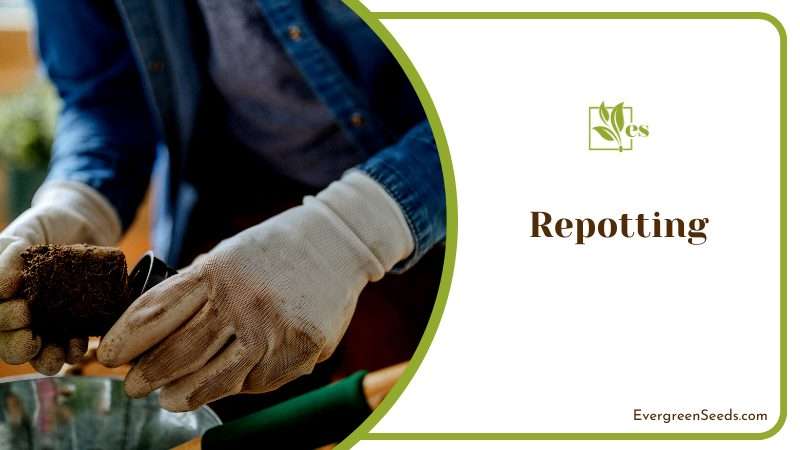
Choose a container with drainage holes. Add a well-draining soil mix that has lots of perlite soil. Terracotta pots are suitable for planting Hoyas and will assist in a robust root system. The best time to repot Hoya australis is in spring.
Summer is the time of blooms for Hoya australis. Sometimes the flowers appear in Autumn or any time in the year. The secret to a good flowering season is the health of the plant. You can expect an abundance of flowers from a stress-free, healthy plant.
The flowers have a sweet vanilla-like scent, and they grow in three-inch clusters. The flowers have a tiny red spot on the white or cream petals. If the growing conditions are good, the flowering clusters can grow bigger. Seed pods offer seeds that can be saved and regrown.
Common Problems
The best plan of action against pests is to prevent their attack from advancing on your houseplants.
Mealybugs are the most prevalent houseplant pest. All Hoya species are vulnerable to their attack. They can rapidly grow on the stems of your Hoyas in humid and hot conditions. The best way to prevent it is always to clear the dead foliage of Hoya australis and remove the pests as soon as you see them.
Whiteflies, tiny insects, love to feed on the juicy sap. They may infect your Hoya australis in summer. The sticky honeydew released by the bugs causes discoloration of the Hoya australis leaf. It can also kill them. They become hard to manage once the population expands.
Whiteflies mostly grow underneath the leaves. They suck the juices of the plant leaves in malnourishment. You can treat the plant with neem oils. As an alternate method, you can remove mealybugs and whiteflies with a spray of insecticide spray or a blow of water.
Snails and slugs feast on the Hoya australis. They emerge in moderate and humid weather. Half eater leaves or holes in the foliage are a sign of their attack. Slime trail on the plant also indicates their presence.
Spreading coffee grounds around the plants protects them against the slug attack. Gardeners also use diatomaceous earth as an effective tool against them. Copper barriers are created to keep slugs away in an outdoor garden.
Yellowing of leaves happens in cold temperatures. Leaf drop, darkening of leaves, and stems that die back may also occur in winters. This problem is mainly because of poor drainage. The overwatered soil of Hoya australis turns cold during winter and spoils the plant.
Overwatering also causes root rot and fungal disease. If your Hoya australis is performing poorly because of this condition, then take cuttings. This method is the only solution to save your plants.
Leaves wilt because of overwatering and poor drainage as well. Here are a few solutions for your overwatered plants:
- Let the soil dry out before watering
- Water only when needed
- Make a well-drained soil mix
- Choose terracotta pots for improved drainage
- Slow down on watering during winters
